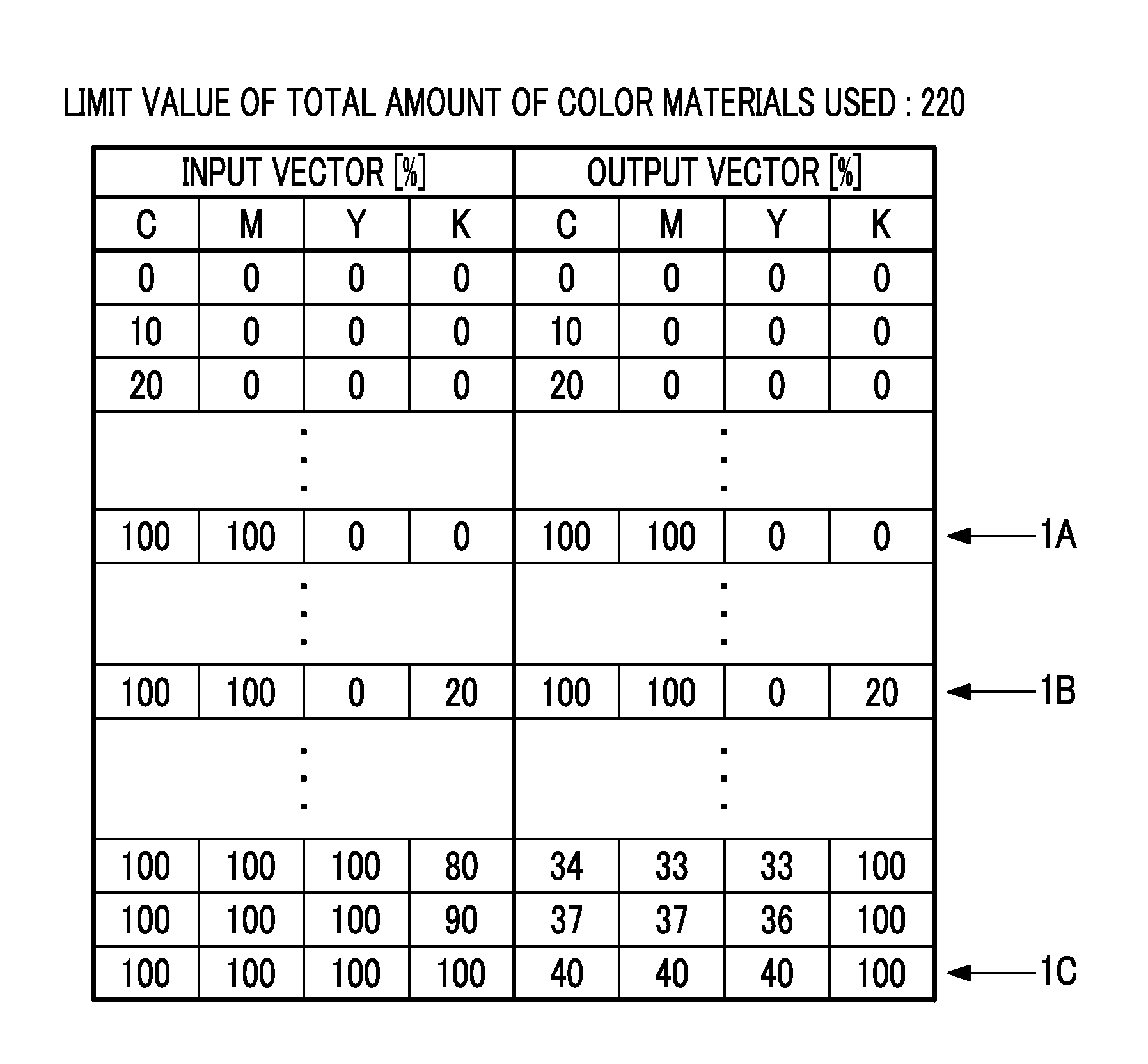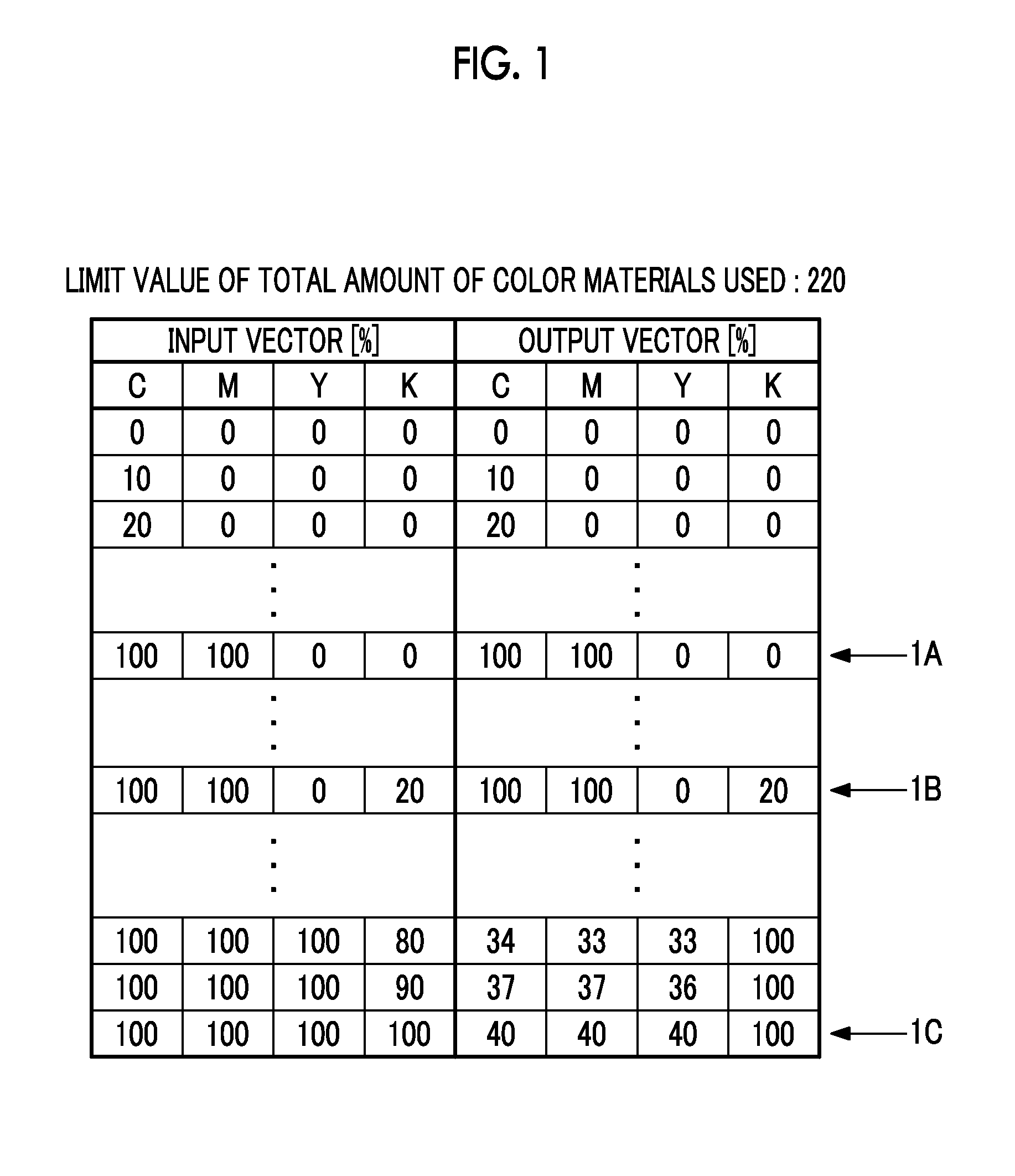Signal conversion method and apparatus, program, and print system
a technology of signal conversion and printing system, applied in the direction of digital output to print units, visual presentation using printers, instruments, etc., can solve the problems of excessive narrowing of color reproduction gamut and deterioration of film characteristics, so as to prevent excessive narrowing of color reproduction gamut and avoid print failure
- Summary
- Abstract
- Description
- Claims
- Application Information
AI Technical Summary
Benefits of technology
Problems solved by technology
Method used
Image
Examples
modification example 1
[0136]A vector space in which the color material usage conversion processes S30_j (j=1, 2, . . . , n) are performed is not limited to the space in which percentages are used as described in the above-mentioned example. The vector space may be a space in which other values (for example, an area ratio or the physical amount of color material) indicating the amount of color material used are used.
modification example 2
[0137]In the color material usage conversion processes S30_j (j=1, 2, . . . , n), the LUT is used as described with reference to FIG. 1 or FIG. 2. However, the output vectors 25_j (j=1, 2, . . . , n) corresponding to output vectors for each limit value may be obtained from the input vector 20 by an algorithm or calculation using a calculation formula, instead of using the LUT or in addition to the LUT.
modification example 3
[0138]A plurality of color material usage conversion processes having different limit values of the total amount of color materials used may be applied to the input vector or the color material usage conversion process (input / output signal conversion process) in which the weight is “0” when the weighted sum is calculated may be omitted. When the weighted sum is calculated, the output vectors for each limit value in which the weight is “0” do not contribute to the calculation of the final output vector 50. Therefore, the process which calculates the output vectors for each limit value in which the weight is “0” may be omitted when the final output vector 50 is calculated.
PUM
 Login to View More
Login to View More Abstract
Description
Claims
Application Information
 Login to View More
Login to View More - R&D
- Intellectual Property
- Life Sciences
- Materials
- Tech Scout
- Unparalleled Data Quality
- Higher Quality Content
- 60% Fewer Hallucinations
Browse by: Latest US Patents, China's latest patents, Technical Efficacy Thesaurus, Application Domain, Technology Topic, Popular Technical Reports.
© 2025 PatSnap. All rights reserved.Legal|Privacy policy|Modern Slavery Act Transparency Statement|Sitemap|About US| Contact US: help@patsnap.com



